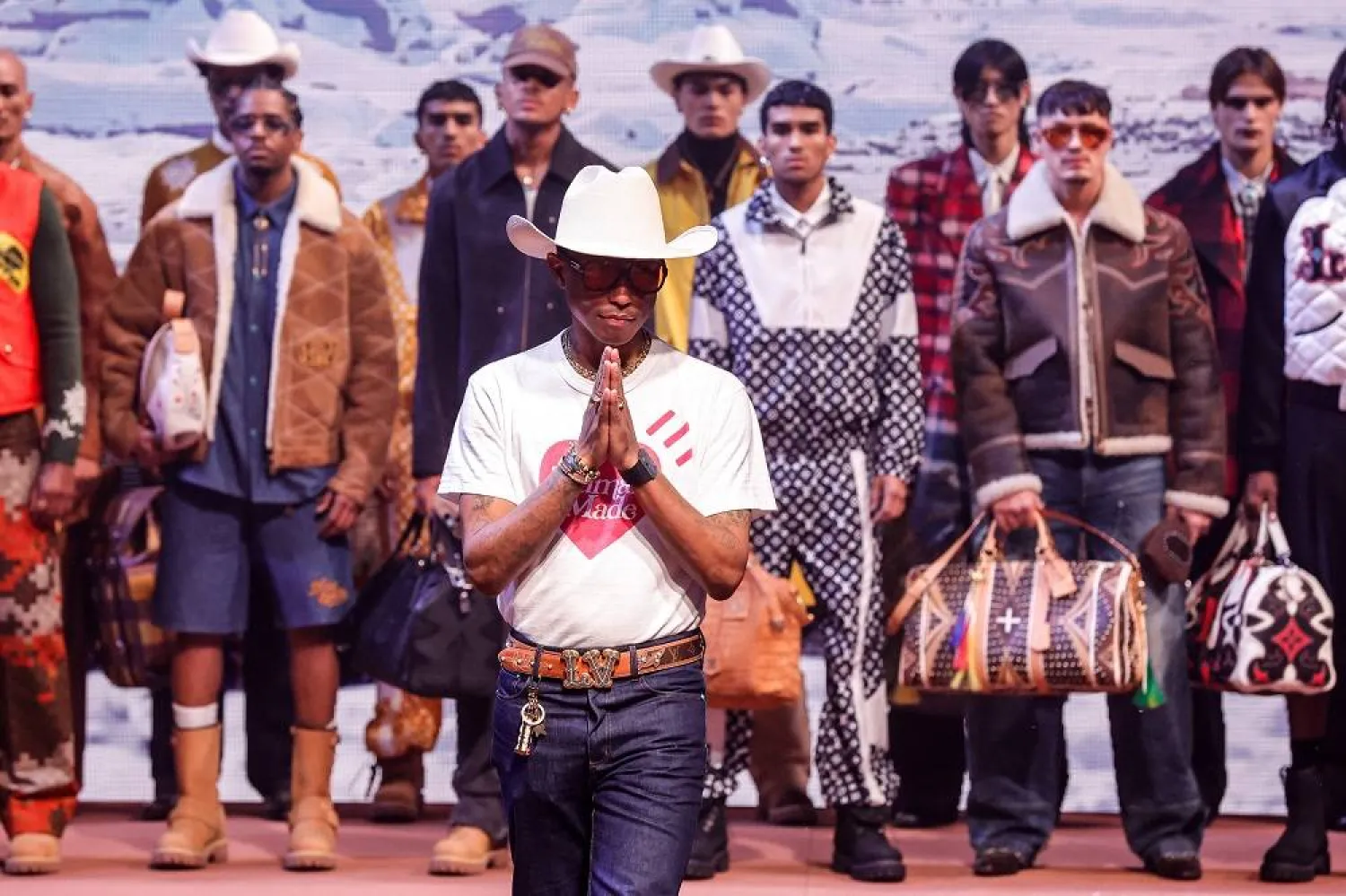It was Wild West meets melting pot America at the Louis Vuitton Fall-Winter 2024 men’s show Tuesday, where musician-turned-designer Pharrell Williams unveiled his highly-anticipated sophomore collection.
The show, set against the dramatic silhouette of the Louis Vuitton Foundation in Paris, masterfully channeled Americana, with Native American designs mixing with modern luxury and showcasing Williams’ unique vision for the powerhouse.
Celebrity guests including Bradley Cooper, Omar Sy and Carey Mulligan gathered to witness a boulder-laden landscape that evoked the rugged terrains of an idealized America. The collection itself was a vibrant celebration of the American spirit, dripping in the famed confidence of Williams — a lauded music star who is a newcomer to fashion design at this level.
The designs emphasized loose proportions, reflecting a modern take on classic American silhouettes. Models — male and female — strutted down the runway in leather cowboy hats, cowhide valises, and checkered denim jackets adorned with bull badges, their cowboy boots boasting shiny metal points. Rodeo jackets shimmered with intricate embroideries, showcasing the luxurious craftsmanship synonymous with the LVMH-owned brand.
The show highlighted the dazzling Vegas-style suiting — jackets with glimmering stripes paired with flared pants, exuding an energy reminiscent of the city’s iconic Strip. The collection also featured oversized jackets, including a statement-making gangster-style fur coat, in bold reinterpretations of traditional Western wear.
Yet, the soul of the collection is its collaboration with Dakota and Lakota nation artists, a partnership that could be seen in intricate designs on scarves, bags, and blankets with floral and geometric patterns telling stories of heritage and identity.
“Pharrell wanted to bring out the Native American spirit, (...) he wanted to showcase we’re still here, we’re still resilient,” Rebecca Brady, 54, a Native American from New Town, North Dakota, told The Associated Press.
Beyond the fashion, the event turned into a cultural spectacle. VIP guests enjoyed Louis Vuitton-branded hamburgers in a barbecue, symbolizing a quirky blend of high fashion and classic Americana. The atmosphere was further charged with performances by Mumford & Sons and artists from the Native American nations.
The evening reached its peak when Williams himself took to the stage, eliciting a wave of excitement from the crowd.
Williams’ performance demonstrated his artistic versatility and highlighted the unique energy he brings to the Louis Vuitton brand. The collection was a daring fusion of styles and cultures, exemplifying a journey beyond fashion into a realm where art, music, and cultural heritage intertwine.







